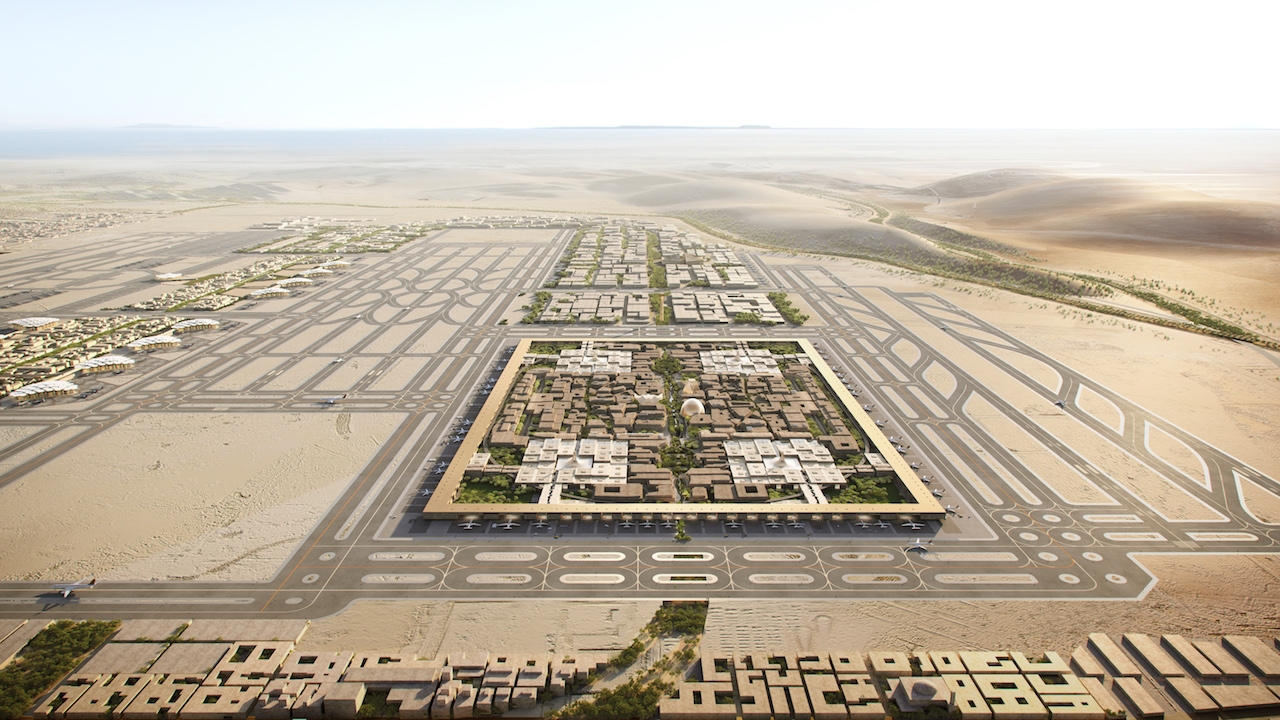Soar points
Amidst the resurgence in air travel with Airports Council International (ACI) World forecasting that global air traffic will hit a milestone in 2024, soaring to 9.7 billion passengers, the Middle East’s air transport hubs are positioned as pivotal players. Gigi King takes a closer look.

Projections indicate that airports across the region, of which there are currently more than 110, will handle 1.1 billion passengers by 2040. This is more than double the 2019 figure of 405 million passengers and will necessitate around US$151 billion in capacity expansion.
Saudi Arabia is spearheading this investment in airport infrastructure. Following the opening of Red Sea International Airport at the end of last year, project developer Red Sea Global (RSG) has now been tasked with overseeing the refurbishment of Al Wajh Airport.
John Pagano, RSG’s CEO, said the refurbishment will make Al Wajh a “modern airport for the people of Tabuk, ensuring it is ready and equipped to support the needs of the growing local community.”
Plans are also in the pipeline for Neom International Airport, which will ultimately replace the existing Neom Bay. Although not in an official capacity, Iranian architecture firm Kalbod Design Studio has released a series of its own renditions for the airport city concept, which it envisions will have “multifaceted functionality,” featuring museums, galleries, and exhibitions as well as different micro-climate areas.
Transformation is also in store for King Abdulaziz International, including a new Hajj and Umrah terminal and the construction of a fourth runway in 2025.
And in March this year, UK construction firm Mace was appointed the delivery partner for Riyadh’s King Salman International Airport, which has been designed by Foster + Partners and is expected to become the world’s largest airport upon its 2030 opening.
Additionally, Abha International Airport is set for significant expansion involving the construction of a 69,400 square metre terminal, slated for completion in 2028.
Beyond Saudi Arabia, authorities are also ploughing investment into their airport infrastructure. Earlier this year, Oman’s Ministry for Transport and Communications and Information (MTCIT) identified a site for the new Musandam Airport.
The hub will be able to handle up to Boeing 737- and Airbus A320-sized aircraft upon its 2028 opening. Bahrain also plans to open a second airport within the decade, while in Kuwait a US$4.36 billion investment is funding a terminal expansion project to boost passenger handling capacity to 13 million passengers per year by 2025.
At Dubai International, where passenger traffic will exceed 88 million in 2024, Paul Griffiths Dubai Airports’ CEO emphasised the commitment to developing its airports: “Looking ahead we’re launching significant projects to refurbish facilities at DXB and fortify our infrastructure for future growth.”
While the plan is to maximise current capacity at DXB, ultimately the ambition is for the phased expansion of Dubai World Central (DWC) so that all operations can be transferred there.
Underpinning all this infrastructural development is the wider adoption of automated services and biometric technology to streamline the airport journey.
At Abu Dhabi’s Zayed International Airport, the deployment of a comprehensive border management solution featuring the world’s first multi-biometric entry/ exit system by IDEMIA, has significantly bolstered border security while simultaneously enhancing the passenger experience.
Elena Sorlini, MD and CEO, Zayed International Airport, noted: “Once fully implemented Abu Dhabi will pioneer as the world’s first airport with biometrics integrated at every stage ensuring travellers enjoy a seamless, safe and secure journey.”
Aviation solutions provider Jacobs is also seeing the wider adoption of new technologies to enhance the passenger journey, including biometric technology, automation in cargo warehouses and alternative fuels for aircraft.
As the region’s airport community expands and evolves, these hubs are helping shape the Middle East’s future and its global standing. They transcend being mere terminals for travel, evolving into dynamic symbols of ambition, innovation and progress.
Stay up to date
Subscribe to the free Times Aerospace newsletter and receive the latest content every week. We'll never share your email address.
